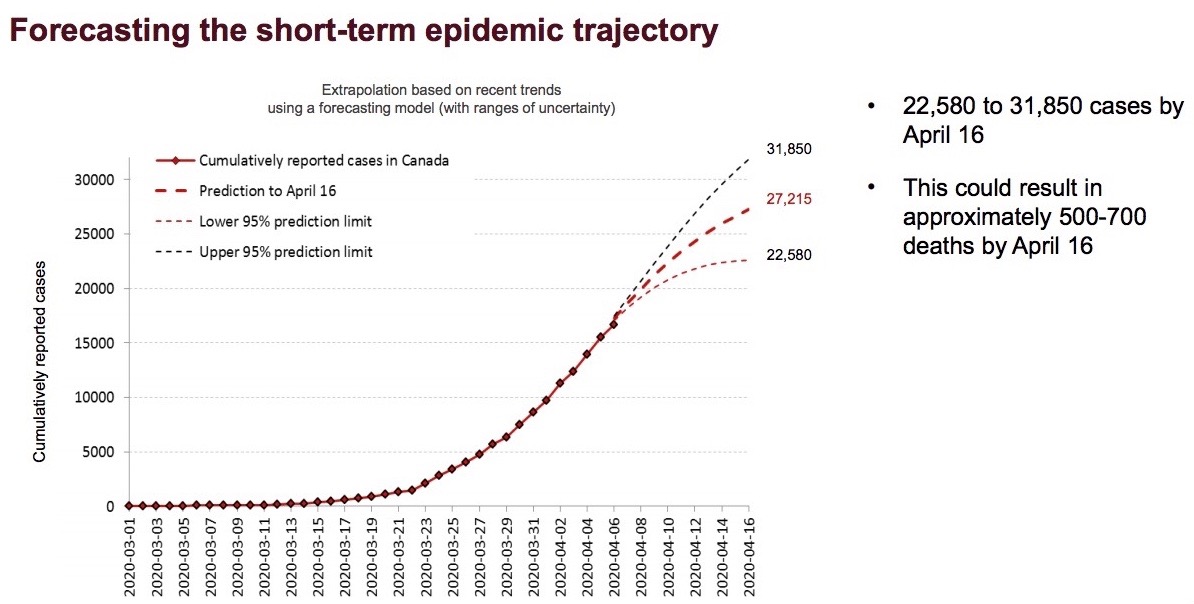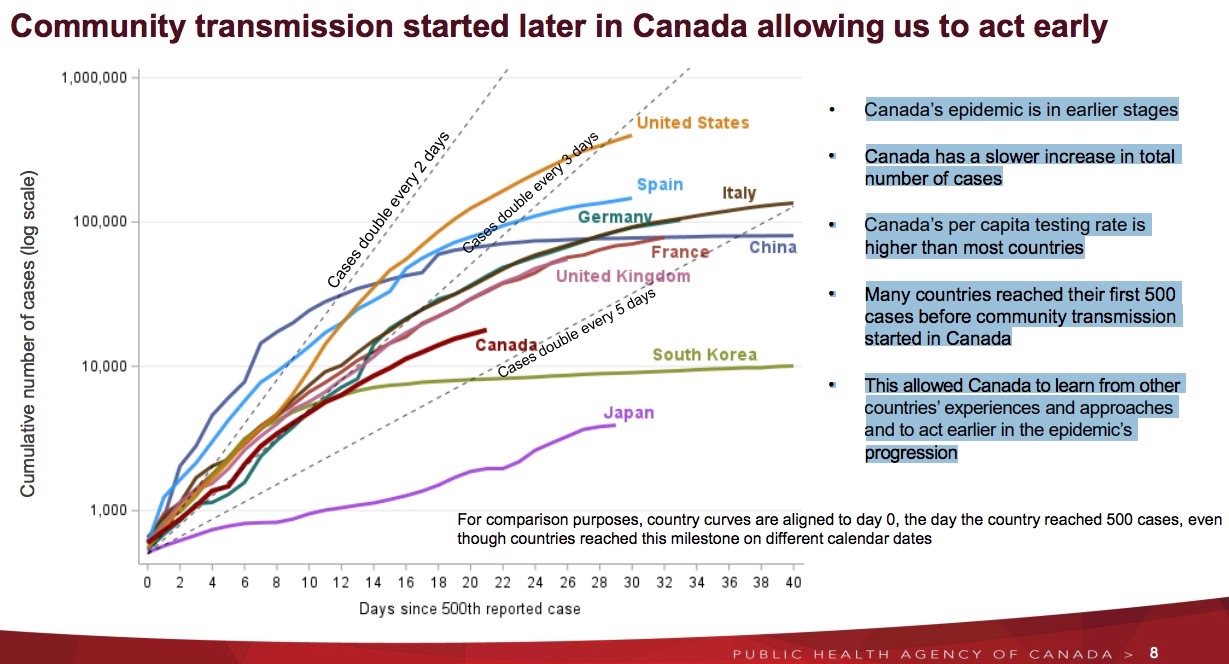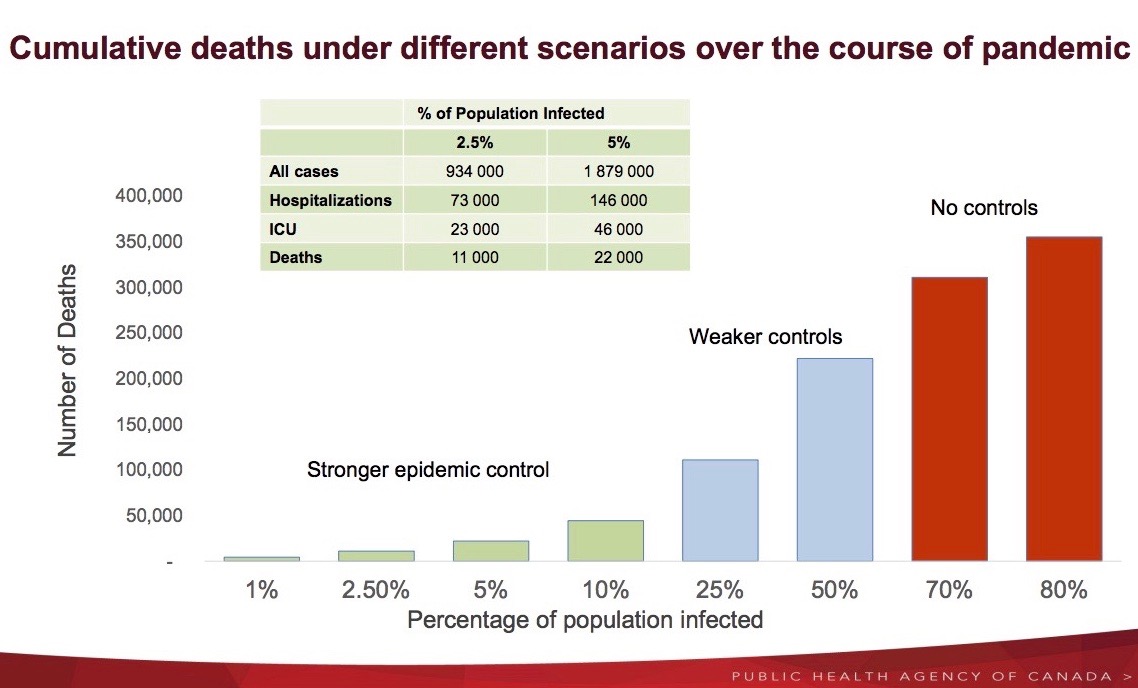OTTAWA – Within a week, there could be 4,000 to 13,000 new COVID-19 cases in Canada and 100 to 300 additional deaths.
And even with strong preventative measures, there could be 934,000 to 1.9 million cases and 11,000 to 22,000 deaths over the course of the pandemic.
“While some of the numbers released today may seem stark, Canada’s modelling demonstrates that the country still has an opportunity to control the epidemic and to save lives,” stated Dr. Theresa Tam, Canada’s chief public health officer, during a press conference on April 9.
“We cannot prevent every death, but we must prevent all the deaths we can.”
As of April 8 there are 18,477 cases in Canada, including 1,118 hospitalizations (326 in intensive care units) and 401 deaths.
Had health officials done nothing, the projections show deaths could have surpassed 300,000 in Canada over the course of the pandemic, which some officials have estimated could last 18 to 24 months.
Weaker controls still could have led to well over 100,000 deaths, but with stronger controls, officials say the rate of infection could be limited to 2.5 to 5 per cent of Canada’s population.
At 2.5% there could be 934,000 cases, 73,000 hospitalizations (23,000 in ICUs) and 11,000 deaths.
At 5% those figures could rise to 1,879,000 cases, 146,000 hospitalizations (46,000 in ICUs) and 22,000 deaths.
“The modelling attempts to show how the epidemic might unfold over the coming months based on our knowledge of how the virus behaves and the potential impact of public health measures,” stated Tam, who warned of the limitations of such predictions.
“Models are not crystal balls and we cannot predict the future with them. However, they do help us to plan and they tell us that our collective actions can have a direct and significant impact on the epidemic trajectory.”
Health officials have also released short-term modelling that shows the progression of the virus over the next week.

This forecasting shows there could be 22,580 to 31,850 COVID-19 cases by April 16 in Canada – and 500 to 700 deaths.
Compared to other nations, Canada is faring well in its attempts to control the spread of the virus, officials say, noting the following:
- Canada has a slower increase in total number of cases;
- the nation’s per capita testing rate is higher than most countries; and
- many nations reached their first 500 cases before community transmission started here, which allowed Canada to learn from other countries’ experiences and approaches and to act earlier.
Yet officials warn of future waves of the virus and stress the following as important measures to contain it:
- physical distancing;
- hand hygiene and respiratory etiquette;
- restrictions on international and domestic travel;
- case detection and isolation;
- quarantine of contacts and incoming travellers;
- increased testing and rapidly tracing contacts.
“We all play a role in what the future will hold for Canada’s COVID-19 trajectory,” said Tam.
“We must continue to control the epidemic using tried and true public health measures, including staying home when possible, maintaining physical distancing, meticulous handwashing, and covering our coughs.”
Tam concluded, “What we do together now to stop the spread of COVID-19 will reduce the impact of the pandemic and determine how soon we can readjust our public health measures in Canada.”

This graph shows the progression of the virus in Canada as compared to other nations.
(Public Health Agency of Canada images)




